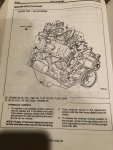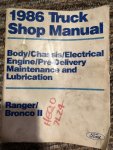- Joined
- Sep 21, 2007
- Messages
- 1,731
- City
- Wa, Bremerton 98310
- Vehicle Year
- 1987
- Total Lift
- Ranger 5" (1½" Hiryder/3" body), BII 4" Procomp
- Total Drop
- Ranger 5sp, BII A4LD
- Tire Size
- Ranger 32"/4:10LS, BII 33"/3:73LS
- My credo
- Deengineer until it is how Blue Oval should have sold it!!
stamina,
1st off, I agree with Walt. I would perform a hydraulic lifter preload adjustment first.
Each part has been doing one job in one spot. If they are still servicable, because of the location specific wear, they need to go back exactly where they came from.
If you are using all new components, then disassemble the rocker arm assemblies, inspect and clean them inside and out, prior to reassembly/installation.
1st off, I agree with Walt. I would perform a hydraulic lifter preload adjustment first.
Each part has been doing one job in one spot. If they are still servicable, because of the location specific wear, they need to go back exactly where they came from.
If you are using all new components, then disassemble the rocker arm assemblies, inspect and clean them inside and out, prior to reassembly/installation.














